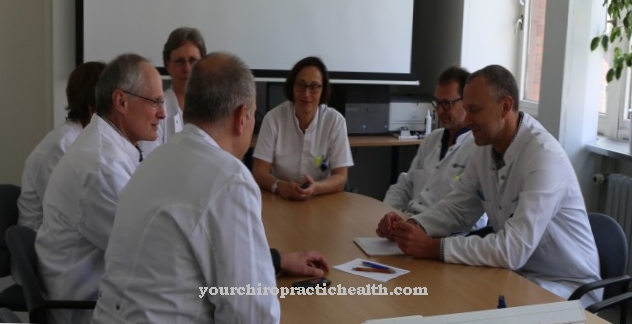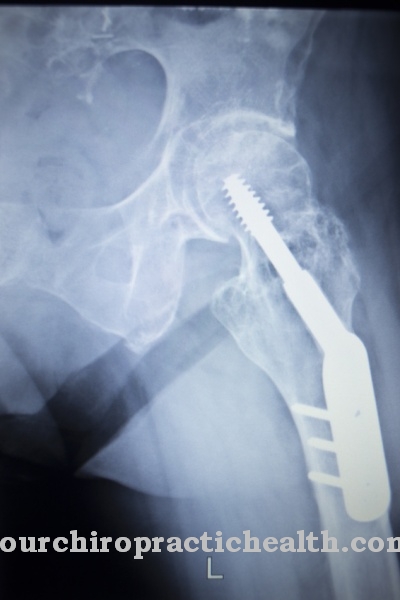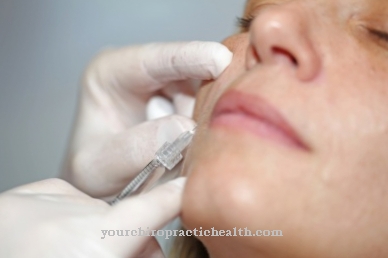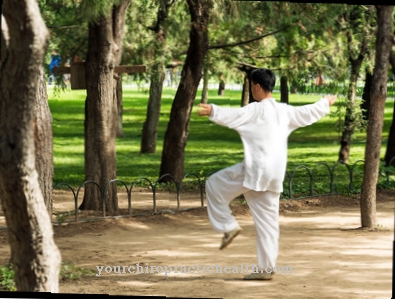Even the doctors of antiquity knew that breathing in medically effective substances helps patients with respiratory problems. In modern medicine, inhalation with an aerosol device is a common form of therapy. All inhalation devices work on the same principle.
What is aerosol therapy?

In the Aerosol therapy the patient inhales liquid or solid active substance particles, which are ejected in a typical way. To get into the lower respiratory tract, the particles must be smaller than 10 microns. However, only particles smaller than 3 microns reach the alveoli. These values apply to patients with healthy lungs. Lungs that are not properly supplied with blood, as is the case with some lung diseases, cannot generally be treated effectively by the drug.
In order to achieve the best possible effect, the drug should get into the airways as much as possible in the entire dose. How it is distributed in the patient's airways depends on various factors: the size, shape, density and electrical charge of the particles and the patient's typical breathing pattern (breath flow and breath-to-volume) determine how the drug arrives. In addition, the aerosol should also be tailored to the individual properties of the lungs and the other respiratory organs of the patient.
Aerosol therapy offers those affected many advantages: In the case of illnesses associated with acute shortness of breath, the emergency active substance immediately reaches where it needs to help. The larger absorption area ensures faster effectiveness. In addition, the user of aerosol therapy only needs about 10% of the otherwise required dose, which further reduces possible side effects.
Function, effect & goals
The medicament transported with the aerosol is used for the local and systemic treatment of respiratory diseases associated with hypersecretion, secretion retention, with edema and inflammation of the mucosa or with spasms of the bronchial muscles. The most commonly used agents are glucocorticoids, beta-2 sympathomimetics and antibiotics. Aerosol therapy is indicated for bronchial asthma, acute and chronic bronchitis, COPD (chronic obstructive pulmonary disease) and cystic fibrosis.
Since there are four different aerosol application systems and each of them has strengths but also weaknesses, the prescribing doctor should definitely adapt the system to be used to the special requirements of his patient. Two of the systems are also suitable for use on the go (metered aerosols with propellant gas and powder aerosols). The other two (nozzles and ultrasonic nebulizer) can only be used at the patient's home. Metered dose inhalers (MDI) are usually prescribed as emergency medication for asthma and COPD. With them, the drug is sprayed into the airways using a propellant. The inhalation system has the disadvantage that around 10% of the dose is lost for technical reasons. In addition, 50% of the active ingredient usually remains in the mouth and cannot be inhaled.
Powder inhalers (DPI) are just as effective as MDI aerosols. The prerequisite for use is that the patient has a respiratory flow volume of at least 30, better still 60 liters per minute. Nebulizer systems are ideal for patients with poor lung function. There are jet nebulizers and ultrasonic nebulizers. With the nozzle nebulizers, the drug solution or suspension is ejected through a nozzle at the end of the mouthpiece. The flow rate is reduced in it so that the patient receives more active ingredient per single dose.
Nebulizers are easier to use because the patient does not have to use any special breathing techniques and the active pharmaceutical ingredients are better distributed in the lungs. With nebulizers, too, the patient has to hold the mouthpiece tightly with his lips. He also has to hold the breath mask tightly during use. With ultrasonic nebulizers, the drug is distributed using ultrasound.
Risks, side effects & dangers
When used correctly, aerosol therapy does not show any side effects, unless the drug prescribed by the doctor is not tolerated by the patient or the dose is too high. In the case of infants and toddlers, it can happen in individual cases that the little patient starts screaming or crying. Do not use the application while he is so excited.
If the child rejects the mask, the treating parent holds it about 1 cm away from their mouth and nose. Pediatric patients need nebulizers that spray very small drops. For children under 3 years of age, metered-dose aerosols and nebulizers (both with a mask) are well suited, from 3 years of age they can use a spacer with a mouthpiece. Patients between 3 and 6 years of age use nebulizers with a mouthpiece. The doctor can prescribe dry powder inhalers to children older than 6 years. It is important that the young patients eat or drink something after each use to prevent corticosteroid or antibiotic deposits in the mouth. For older children and adult patients, it is sufficient to rinse their mouths out immediately afterwards.
It is also advisable to wash your face after inhalation. A great deal of hygiene is particularly important when using nebulizers. This applies to the solution to be prepared by the patient as well as to the device itself. Any remaining solution in the container must be disposed of after each use. After that, all parts of the nebuliser should be thoroughly cleaned. It also needs to be disinfected once a day. All parts except the hose must air dry and may only be reassembled when they are completely dry.













.jpg)

.jpg)
.jpg)











.jpg)